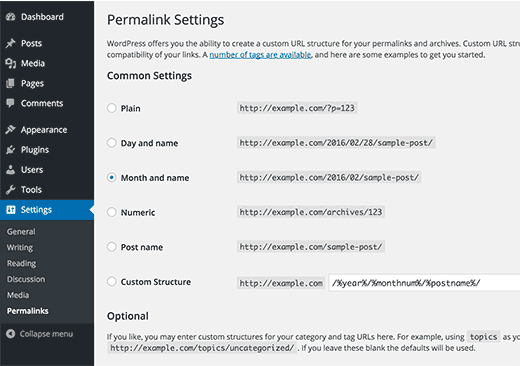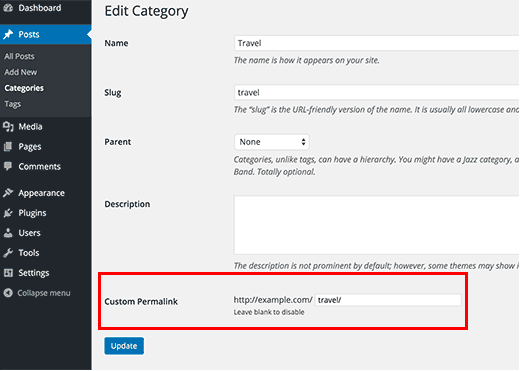What comes to mind when you think of SEO? “Permalink” probably isn’t the first or second thing, maybe not even the tenth thing. The truth is, though, permalinks and SEO have a lot more in common than you may think, and — when done correctly — can only benefit your website in the long run.
Luckily, permalinks are fairly simple to master, which is good, and vital to SEO value. Let’s get into the details of permalinks, how to create them, and using them with WordPress.
What Is a Permalink?
Look at the URL of this post. That’s a permalink:
blog.hubspot.com/marketing/what-is-a-permalink
A permalink is the full URL of a website or webpage. But permalinks are comprised of a few parts, so let’s look at each one: The domain name, which is everything before the “.com,” and the slug, which is everything after the backslash.
Slugs are vital for SEO and permalinks because they tell search engines and web browsers how to index your site. A URL with a lot of random letters and numbers isn’t attractive to site visitors and isn’t optimized for search engines.
Let’s say you’re blogging about sponsored tweets and their value. Would you rather have the URL look like this:
yourdomain.com/sponsored-tweets-guide
Or like this:
yourdomain.com/post-id?=5726fjwenfkd
Probably the first one right?
Great slugs use keywords to describe posts. Keywords are words that have a lot of significance to them. When we talk about keywords in the context of SEO, we’re referring to words that tell the reader — and the search engine — what’s on your webpage. Take our good example above, “sponsored-tweets-guide.” From this permalink, the reader (and Google) know the page houses a guide to sponsored tweets and is targeting the keyword, “sponsored tweets.”
Keywords also have “search volume” behind them, which refers to the number of people searching for that keyword or phrase over a period of time. If you were writing a post titled, “How to Create an Instagram Story,” the keyword you’re targeting might be “Instagram Story.” If you’re targeting a long tail keyword (i.e., several words or a phrase), it might be, “How to create an Instagram Story.”
When using a content management system (CMS) like WordPress, permalinks make it easy for you or your readers to share your post, and they help you rank on Google.
So, you’re probably wondering how to optimize a permalink for WordPress. We’ll cover that next.
Using Permalinks with WordPress
When you create a post in WordPress, the permalink isn’t optimized. You can find the permalink underneath the post title when you’re editing. It should be the date your post is going live followed by the full name of your post.
This isn’t fully optimized, especially if your post title has a longer name. If the title of your post is more than three to five words long, it should be optimized by using only the keywords, an action that’s possible in WordPress.
Changing permalinks is a fairly simple process, and you won’t need to install plugins in order to do so. If you want to create your own permalink, this method is another simple process that involves just a few more steps.
This is my featured snippet
- Open ‘Settings’
- Click on the ‘Permalink’ section
- Choose an option
- Create custom tags
1. Open ‘Settings’
The first step to structuring your permalink is to open the “Settings” section of your WordPress dashboard. This should bring you to a list of options with various subheadings.
2. Click on the ‘Permalink’ section
Once you click on this option, you’ll be taken to a screen with a variety of options to choose from. Depending on your preference of how you want your post to be archived and searched, you can pick the one that most aligns with your goal.

Image Source
3. Choose an option
Here are the different choices you’ll have and what they mean:
- Plain — What you want to ignore if you’re looking for maximum SEO value. It’s the post identification number, with no other information. If you are blogging for no audience in mind, sticking with this method is a good idea.
- Day and name — This option sets up the slug to be the day the post went live and the name of your post. A good reason to use this is if you have multiple posts of the same name, but want the differentiator to be the date it was posted.
- Month and name — The same as the previous option, this time with the month being displayed. If you have a monthly column, such as a “Favorites” or something similar, this is a great option.
- Numeric — Numeric is another choice that’s safe to ignore, as this structure is all numbers and provides little SEO value. If you are archiving posts numerically, as a way to look back and see previous posts, numeric is the choice for you.
- Post name — Choosing this route is an okay method for SEO, but not the best, as Google likes to focus on strictly keywords when ranking posts. This setting is good if coming up with catchy titles is part of your niche.
4. Custom structure
The last option, “Custom Structure,” is what you’d use for a structure that will automatically set the permalink for you.
For example, if you wanted to set the structure to be the year of the publish date followed by the post name, here’s what you would put in the box:
/archives/%year%postname%/

Image Source
Each custom structure is separated by a backslash, and each tag starts with the percent sign. WordPress has a list of all of the structure tag options available to you, some options include author, hour, and category.
When creating permalinks, the main thing to keep in mind is focusing on keywords. They’re the virtual key (pun intended) to making sure your content is found by the people you want to reach. They make your URLs look clean and raise your engine ranking.
For more information on how to become a master at keywords, check out our guide for beginners here.

